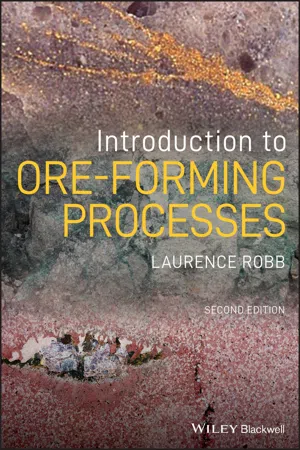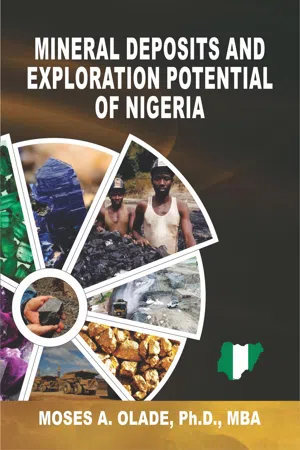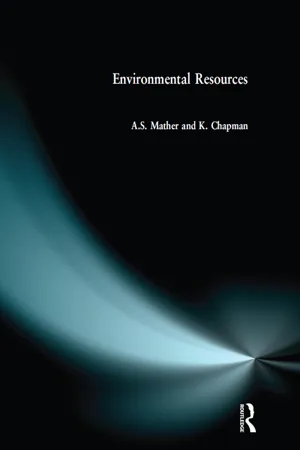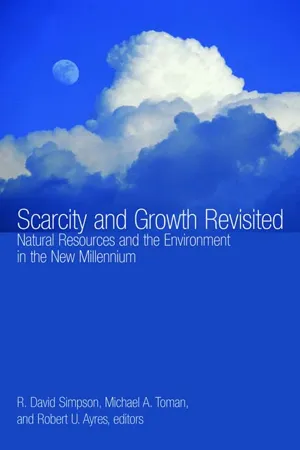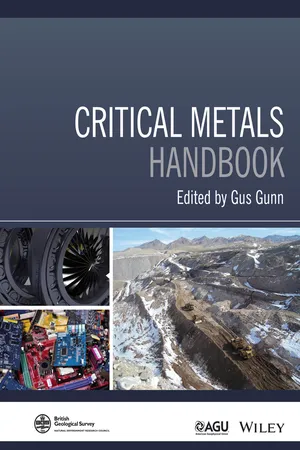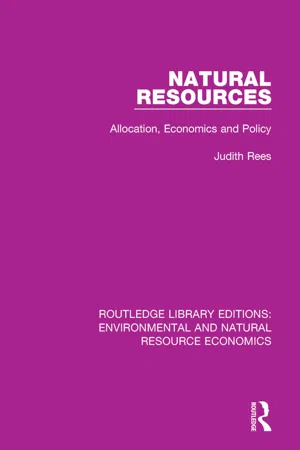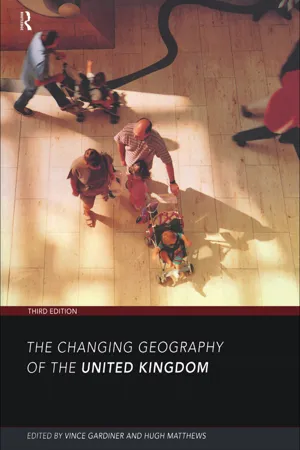Geography
Mineral Resources
Mineral resources refer to naturally occurring substances found in the earth that have economic value. These resources include metals, such as gold and copper, as well as non-metallic materials like salt and sand. They are essential for various industries, including construction, manufacturing, and energy production, and play a crucial role in shaping the economic and geopolitical landscape of a region.
Written by Perlego with AI-assistance
Related key terms
10 Key excerpts on "Mineral Resources"
- eBook - ePub
- Laurence Robb(Author)
- 2020(Publication Date)
- Wiley-Blackwell(Publisher)
Introduction: Mineral Resources
Topics
General introduction and aims of the book A simple classification scheme for mineral deposits Some important definitions- metallogeny, syngenetic, epigenetic, mesothermal, epithermal, supergene, hypogene, etc.
- periodic table of the elements
- tables of the main ore and gangue minerals
- geological time scale
- enrichment factors required to make ore deposits
- how are Mineral Resources and ore reserves defined?
- sustainability
- environmental responsibility
Introduction and Aims
With a global population in 2019 of close to eight billion people, and this figure set to increase to some ten billion by 2050, it is apparent that the world's economies are under growing pressure to meet the demands of an increasingly materialistic lifestyle. The unprecedented growth of human population over the past century has resulted in a dramatic increase in demand for, and production of, natural resources – it is therefore evident that understanding the nature, origin, and distribution of the world's mineral deposits remains a vital and strategic topic. The discipline of “economic geology,” which covers all aspects pertaining to the description and understanding of Mineral Resources, is, therefore, one which traditionally has been, and should remain, a core component of the university earth science curriculum. It is also the discipline that underpins the training of professional earth scientists working in the minerals and related industries of the world. Unfortunately, a tendency at many universities in the recent past has been to treat economic geology as a vocational topic, and to provide instruction only to those individuals who wished to specialize in the discipline or to follow a career in the minerals industry. There has been a trend, at least in many parts of the world, to sideline economic geology both as a taught discipline and a research topic. - Moses A OLADE(Author)
- 2020(Publication Date)
- Prescott Resource Publishers(Publisher)
Chapter 1Introduction to Mineral DepositsDefinition of Terms
Mineral Resources are useful earth materials of sufficient quantity and adequate quality to be extracted and used for human benefit. Since time immemorial, economic minerals have been exploited and used as raw materials for industrial production and to generate revenue for the national economy through export to other countries. Mineral Resources can be subdivided into two broad groups, according to their form of occurrence: (1) Solid Minerals and (2) Liquid Fuels (petroleum). When solid minerals of economic value are concentrated in the earth’s crust in sufficient quantities to be of extractable, they are described as mineral deposits. Solid mineral deposits can be subdivided into three types: metallic, non-metallic, and energy minerals.The total mineral endowment of a nation or region consists of two major parts: identified resources and undiscovered resources. Identified resources are those resources whose location, grade, quality, and quantity are known or can be estimated from specific geological information. In contrast, undiscovered resources are those whose existence is extrapolated based on broad geological knowledge. Mineral reserves refer to the portion of an identified mineral resource that can be mined at a profit. Private investment is a major driving force of mineral resource development in a capitalist system, and the desire to extract minerals at a profit becomes a paramount consideration in evaluating expected returns on investment.Mineral Resources are unique among other natural resources because they are not only of instant value but also are non-renewable- eBook - ePub
- A.S. Mather, K. Chapman(Authors)
- 2018(Publication Date)
- Routledge(Publisher)
CHAPTER 8 Mineral ResourcesThe significance of minerals is reflected in the classification of major periods of human history in terms of the links between dominant technologies and specific resources. Copper, tin and iron were essential to the metal-using cultures of the Bronze and Iron Ages. The manufacture of metals of various types continues to be the most important application for Mineral Resources, but they are also used in construction and in the chemicals industry. Indeed much that we take for granted in modern society depends upon the exploitation of Mineral Resources.Scarcity and abundance
Nature of Mineral Resources
A ‘mineral’ is any naturally occurring inorganic substance; a ‘mineral resource’ is a ‘mineral’ which is recognized as having utility. ‘Minerals’ are created by natural processes; they are transformed into ‘Mineral Resources’ by cultural processes such as advances in knowledge. For example, flint was a mineral resource during the Neolithic, but iron did not ‘become’ a resource until much later. Thus the range of inorganic substances contained within the Earth’s crust that are defined as Mineral Resources has increased through time as humans have developed the means of exploiting them. A distinction is usually made between the fuel (i.e. coal, oil, natural gas, etc.) and non-fuel Mineral Resources and the latter are further subdivided into metalliferous (i.e. gold, silver, iron, etc.) and non-metalliferous (i.e. limestone, sulphur, potash etc.) categories. It is beyond the scope of this book to provide a systematic review of the occurrence and applications of contemporary Mineral Resources (see Blunden, 1985), but an awareness of certain general characteristics is important to an understanding of patterns of exploitation.Most minerals are compounds of the elements which make up the Earth’s crust although a few, such as gold and silver, occur as free elements. There are wide variations in the crustal abundance of these elements and, therefore, in the minerals derived from them. Table 8.1 indicates that aluminium is the most abundant metallic mineral, accounting for an estimated 8 per cent by weight of the Earth’s crust. This global average conceals wide geographical variations in the concentration of bauxite from which aluminium is extracted. Table 8.1 - eBook - ePub
Scarcity and Growth Revisited
Natural Resources and the Environment in the New Millenium
- R. David Professor Simpson, Michael A. Professor Toman, Robert U. Professor Ayres, R. David Professor Simpson, Michael A. Professor Toman, Robert U. Professor Ayres(Authors)
- 2012(Publication Date)
- Routledge(Publisher)
Nevertheless, societies’ dependence upon minerals has resulted in periodic concern about the adequacy of mineral supplies to continue to support the economy. This concern has been rooted in experiences as diverse as shortages of minerals in wartime, depletion of individual mineral deposits and even mining districts (Hewett 1929), and rapid increases in mineral consumption when countries industrialize. These experiences have sparked periodic debates about the abundance or scarcity of Mineral Resources.Addressing such questions has been particularly difficult because the concept of a mineral resource involves both geologic and economic aspects and because knowledge about the earth and future economic conditions is limited. On the one hand, mineral deposits are physical entities that form as the result of geologic processes and are therefore finite and exhaustible. On the other hand, the amount of a mineral commodity that will be produced in the future is dependent on future costs of discovering and processing new mineral deposits, recycling used materials, and developing substitute materials (Tilton 1996). Many debates about mineral scarcity have taken place because participants did not appreciate both the physical and economic aspects of Mineral Resources.The debates about the adequacy of future mineral supplies that took place in the 1970s illustrate this lack of understanding. The twentieth century was an era of unprecedented metal availability due to geologic and economic circumstances. The settlement of Australia, Canada, and the western United States, and colonial-era mineral exploration in Africa in the second half of the nineteenth century, led to the discovery of an unprecedented number of mineral deposits that provided abundant, high-quality minerals throughout the twentieth century. In addition, innovations in mining, such as Daniel jackling's recognition that low-grade porphyry copper ores could be profitably mined by using economies of scale, as well as innovations in mineral processing and metallurgy, have reduced the cost of producing metals and added to the inventory of very large deposits that can be profitably processed. Further, advances in information processing and search technologies used in mineral exploration, including the widespread application of geophysical tools, geochemical methods, satellite imaging, and mineral deposit models, increased the efficiency of mineral exploration. - eBook - ePub
- Laurence Robb(Author)
- 2013(Publication Date)
- Wiley-Blackwell(Publisher)
Introduction: Mineral ResourcesTOPICSGENERAL INTRODUCTION AND AIMS OF THE BOOKA SIMPLE CLASSIFICATION SCHEME FOR MINERAL DEPOSITSSOME IMPORTANT DEFINITIONSmetallogeny, syngenetic, epigenetic, mesothermal, epithermal, supergene, hypogene, etc.SOME RELEVANT COMPILATIONSperiodic table of the elements tables of the main ore and gangue minerals geological time scaleFACTORS THAT MAKE A VIABLE MINERAL DEPOSITenrichment factors required to make ore deposits how are Mineral Resources and ore reserves defined?NATURAL RESOURCES AND THEIR FUTURE EXPLOITATIONsustainability environmental responsibilityINTRODUCTION AND AIMS
Given the unprecedented growth of human population over the past century, as well as the related increase in demand for and production of natural resources, it is evident that understanding the nature, origin and distribution of the world’s mineral deposits remains a strategic topic. The discipline of “economic geology,” which covers all aspects pertaining to the description and understanding of Mineral Resources, is, therefore, one which traditionally has been, and should remain, a core component of the university earth science curriculum. It is also the discipline that underpins the training of professional earth scientists working in the minerals and related industries of the world. A tendency in the past has been to treat economic geology as a vocational topic and to provide instruction only to those individuals who wished to specialize in the discipline or to follow a career in the minerals industry. In more recent years, changes in earth science curricula have resulted in a trend, at least in a good many parts of the world, in which economic geology has been sidelined.The conceptual development of earth systems science, also a feature of the latter years of the twentieth century, has led to dramatic shifts in the way in which the earth sciences are taught. A more holistic, process-orientated approach has led to a much wider appreciation of the Earth as a complex interrelated system. The understanding of feedback mechanisms has brought an appreciation that the solid Earth, its oceans and atmosphere, and the organic life forms that occupy niches above, at and below its surface, are intimately connected and can only be understood properly in terms of an interplay of processes. Examples include the links between global tectonics and climate patterns, and also between the evolution of unicellular organisms and the formation of certain types of ore deposits. In this context the teaching of many of the traditional geological disciplines assumes new relevance and the challenge to successfully teaching earth system science is how best to integrate the wide range of topics into a curriculum that provides understanding of the entity. Teaching the processes involved in the formation of the enormously diverse ore deposit types found on Earth is necessary, not only because of its practical relevance to the real world, but also because such processes form an integral and informative part of the Earth’s evolution. - eBook - ePub
- Gus Gunn, Gus Gunn(Authors)
- 2014(Publication Date)
- American Geophysical Union(Publisher)
1. Metal resources, use and criticalityT.E. GRAEDEL1 , GUS GUNN2 AND LUIS TERCERO ESPINOZA31 Center for Industrial Ecology, Yale University, New Haven, Connecticut, USA 2 British Geological Survey, Keyworth, Nottingham, UK 3 Fraunhofer Institute for Systems and Innovation Research ISI, Karlsruhe, GermanyThe geology and technology of metals
Key conceptsIn a book such as this, which is intended for a broad audience, it is important to discuss some key concepts and terminology relating to minerals and metals which, although widely used, are seldom defined. In some cases the meaning may be obvious, while in others they are anything but obvious. To avoid confusion and misuse, and to minimise the risks of misunderstanding, we define in the first part of this chapter certain fundamental terms that will provide a foundation for the chapters which follow.Minerals are essential for economic develop-ment, for the functioning of society, and for maintaining our quality of life. Everything we have or use is ultimately derived from the Earth, produced either by agricultural activities or by the extraction of minerals from the crust. Unlike crops, which are grown for the essential purpose of maintaining life by providing the nutrients we need to survive, mankind does not generally need the minerals themselves. Rather, minerals are extracted for the particular physical and chemical properties their constituents possess and which are utilised for specific purposes in a huge range of goods and products. Following some form of processing and purification, a mineral, often in combination with certain other minerals, is incorporated into a component which is used in a product. It is the need or desire for the productsthat generates a demand for minerals, rather than demand for the mineral itself. As a result, there is always the possibility of finding an alternative material to provide the required functionality. The only exceptions to this possibility are nitrogen, phosphate and potash, which are essential to life itself and cannot be substituted. - eBook - ePub
Natural Resources
Allocation, Economics and Policy
- Judith Rees(Author)
- 2017(Publication Date)
- Routledge(Publisher)
3Minerals: distribution, production and economicsIntroduction
Few would deny that mineral exploitation has played an important role in generating industrial development and economic growth. This is not, however, to suggest that the existence of minerals per se has any deterministic power over the scale or the location of economic development. To suggest as much ignores the crucial role that man and his demands, technology and institutions play in imparting resource value to ‘neutral stuff. Before minerals can attain any value or generate any growth, they have to be located, extracted and converted into usable products for which a demand exists, and delivered to consumers in the required quantities and qualities at the needed times and locations. By the time they are usable most must be regarded as manmade products, marketable only after the investment of considerable amounts of capital, energy and labour.Patterns of mineral exploration, exploitation, refining and trade cannot be explained simplistically in terms of the physical endowments of various countries, but require study of the way resource investment decisions are made and of the factors influencing the decision-making process. Who makes such investment decisions? What are their objectives? And how far are they subject to political pressures? These are all important questions which must be addressed during any meaningful attempt to understand mineral developments, their location and scale. The operations of mining corporations, international financial institutions, mineral purchasing companies and governments are critical factors explaining the spatial pattern of mineral production. In the same way, study of the role of natural resources as a generator of economic development must go far beyond the outlining of patterns of ownership and trade. There is a need to assess the way in which market structure, corporate and institutional behaviour and government policies influence not only the value of individual mineral deposits, but also the proportion of the generated wealth and growth which accrues to the producer states. - eBook - ePub
Living with Earth
An Introduction to Environmental Geology
- Travis Hudson(Author)
- 2016(Publication Date)
- Routledge(Publisher)
You probably already understand that Mineral Resources come from the geosphere, and that the principal way they are recovered is by mining. Mining is just the first step in making Mineral Resources available for your use, however. Most Mineral Resources require one or more processing steps to make them tradable commodities. Every step in recovering and processing Mineral Resources has potential environmental consequences that can be a concern. Because these environmental consequences are well represented in the mining and processing of metal-bearing geosphere materials, this chapter emphasizes metal-bearing mineral deposits.IN THIS CHAPTER YOU WILL LEARN:➧ What makes minerals a resource for people➧ The roles played by exploration, mining, and processing in providing people with Mineral Resources➧ The environmental concerns associated with mineral resource production➧ How negative environmental impacts can be avoided or mitigated➧ The future challenges of mineral resource use12.1 What Mineral Resources AreMineral Resources are naturally occurring solid materials in or on Earth’s crust from which we can currently or potentially extract a useful commodity. Economics plays a key role in defining Mineral Resources. Take lead, for example.Lead is the metal in your car battery that makes it so heavy Lead is widely distributed in small amounts—its average concentration in Earth’s crust is 12.5 parts per million (ppm), or 0.00125%. A cube of average crust 100 meters (328 ft) on a side weighs almost 3 million tonnes (6.6 billion lb). If it has an average lead content of 0.00125%, such a cube contains over 3.7 tonnes (8200 lb) of lead. At the 2008 average price of $1.31 per pound, lead recovered from this cube could be sold for a total of over $10,000. This is equivalent to receiving about 0.3 cents for every ton of crust processed to recover the lead.It’s impossible to recover lead from crust at costs this low, however. The small amounts of lead scattered through the crust are not a mineral resource—they cannot be economically recovered, even if the price paid is many times higher. Lead concentrations thousands of times greater than the crustal average are needed if it is to be recovered economically and become a mineral resource. - eBook - ePub
- Hugh Matthews, Vince Gardiner(Authors)
- 2002(Publication Date)
- Routledge(Publisher)
Chapter 4Earth resources
John Blunden
Introduction
The UK contains rocks which are representative of almost all the identified geological systems, from the oldest which occur in the north and west and include many igneous and metamorphic types, to the youngest which predominate in the south and east and include the softer sedimentary rocks. Besides giving rise to a remarkably varied and often extremely attractive range of landscapes these rock types provide an extensive source of mineral products, some of which are widely mined or quarried and have important economic value (Figures 4.1a Figures 4.1c ). These extend from the ubiquitous aggregate materials, sand and gravel, igneous rocks, limestone and sandstone; to other non-metalliferous minerals such as chalk, brick clays and slate; to more localised non-metalliferous minerals such as china clay, ball clay, gypsum and anhydrite, salt, fluorspar, barytes and potash; and to the metalliferous minerals, iron, lead, zinc, tin, copper, gold and silver (Dunham 1979).Minerals exploitation: a changing milieu
Little more than a quarter of a century ago the United Kingdom was thought to be about to enjoy a period of unparalleled expansion in the exploitation of its minerals’ potential. Not since the mid-nineteenth century when the UK had been a major world producer of copper, tin, iron and lead and zinc had it been possible to envisage for the UK a situation in which minerals might play such a key role in its economy (Blunden 1975). Experts, in reassessing the potential of Cornwall, one of the country’s richest metalliferous regions in the last century, were able to suggest that its then somewhat moribund economy would be transformed by a ‘considerable renaissance’ in the production of tin and that as a result ‘the prospects for the national economy as well as that of the South West of England could be exciting indeed’ (Eglin 1969). - eBook - ePub
Green Scenarios: Mining Industry Responses to Environmental Challenges of the Anthropocene Epoch
International Mining Forum 2021
- Artur Dyczko, Andrzej Jagodzi?ski, Gabriela Wo?niak(Authors)
- 2022(Publication Date)
- CRC Press(Publisher)
et al. 2016).The useful minerals are a diverse group; they can have the form of solids, the so-called solid fossil fuels (i.e. hard coal, lignite, building stones, clay raw materials, etc.) and they can also be in liquid form (i.e. crude oil, drinking water, medicinal water, mineral water). There are also gaseous minerals (e.g. natural gas). However, in order to be obtained, they must meet specific quantitative, qualitative, technical and functional requirements. The aspect of the industrial use of minerals, in the form of profitability and profitability of the undertaken mining activities related to the extraction of useful minerals (Fig. 1 ), is the basis for distinguishing a useful mineral which we will call a deposit, from an accumulation called an occurrence, i.e. it does not meet the requirements for the acquired minerals and the economic account. Terms are also used in relation to deposits, such as metal-ore and ore deposit. Ores are useful minerals from which metals are obtained. According to Krajewski (1954) , ores are minerals that are the source of e.g. Ag, Au and platinum groups.(Photo: Alicja Kicińska, September 2014)Figure 1.“Szczakowa” mining plantGeological processes are very complex and diverse. They have taken place on our planet during the last 4.5 billion years. All of this, combined with the continuous development of technology and research methods, have resulted in the mineral extraction of not only one (primary) mineral, but economic reasons also favour obtaining so-called accompanying minerals or associated minerals. The latter occurs with the main useful mineral, but they have different technological and functional properties, which determine the other method of their exploitation and processing (Gruszczyk 1984 ; Kullerud 2003
Index pages curate the most relevant extracts from our library of academic textbooks. They’ve been created using an in-house natural language model (NLM), each adding context and meaning to key research topics.
